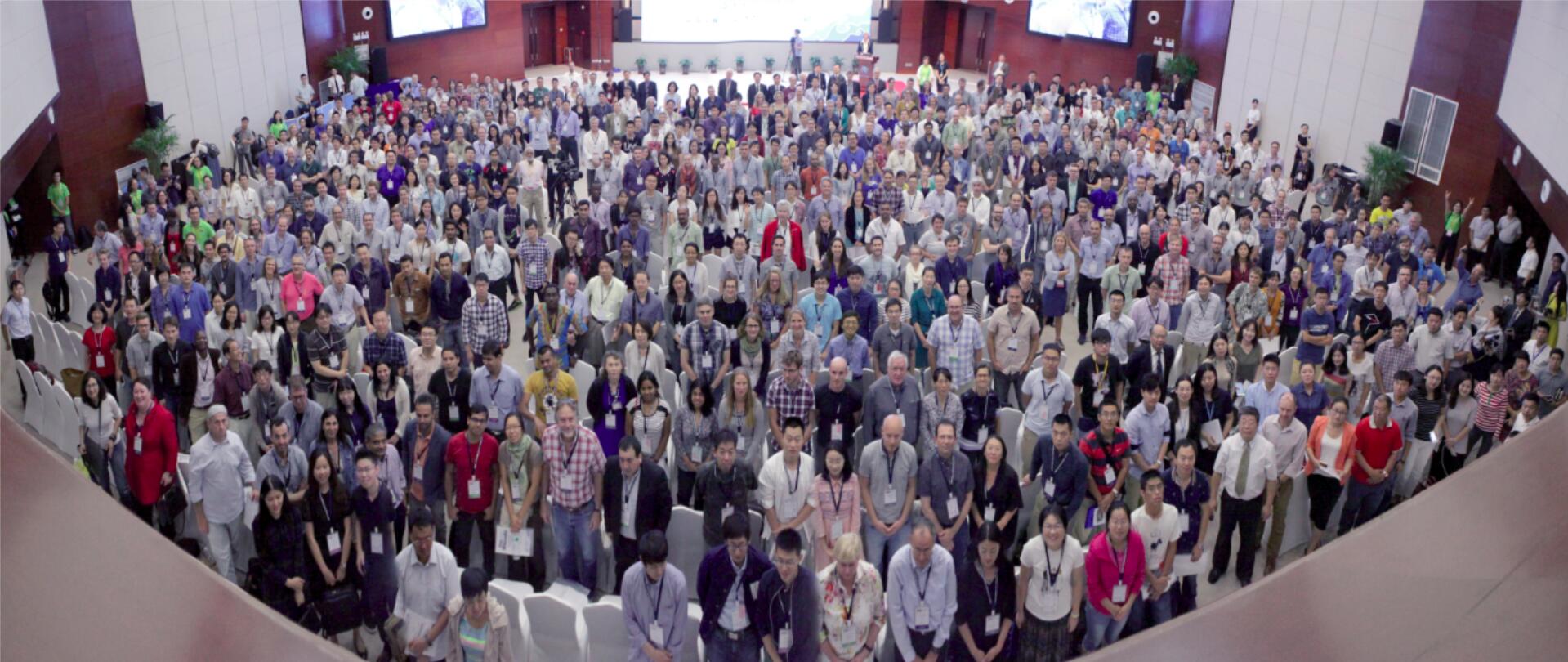CLIVAR looks to the future at conference marking 20th anniversary

Nestled between the mountains of Laoshan and the warm waters of the Yellow Sea, Qingdao, China, welcomed more than 600 scientists from 50 countries who gathered for the second CLIVAR Open Science Conference, the first one having taken place over a decade ago.
September 18, the first day of the conference, was hosted at the Qingdao National Laboratory for Marine Science and Technology—a new sprawling campus designed to be an open and innovative world-class marine research center in the heart of China’s “Ocean Tech Valley”. The opening featured high profile remarks from science leaders in the international climate science arena and from political figures in the region. “The role of the ocean in the climate system appears today more important than ever,” said Guy Brasseur of the World Climate Research Programme. His remarks resonated with the room and were echoed by many of the speakers. Thomas Stocker of University of Bern, one of the leaders of the IPCC Fifth Assessment Report, emphasized that, “We are living in truly exceptional times and to prepare…… we need the science to plan for the risks and outcomes.” He went on to elaborate on the services the ocean provides: taking up heat and carbon; regulating the water cycle; and producing food.
Over the five-day period scientists showcased the major advances in climate and ocean research since the first CLIVAR Conference in 2004 and argued for continued efforts to improve our observational records (including paleo), models, process understanding and our ability to communicate scientific discoveries and their implications and translating knowledge into useful information. The presentations covered scales ranging from a centimeter to global and from hours to decades and longer. Throughout the conference the value of cross-disciplinary integration and international cooperation was emphasized.
Critical issues addressed included the impacts of a warming ocean on future climate, regional variations in ocean and climate warming, the respective contributions of thermal expansion and melting ice to sea-level rise, the connections between the oceans and the global water and energy cycle, the changes taking place deep in the ocean, and the consequences of excess carbon on sea life.
The Conference theme was “Charting the course for climate and ocean research” and key to its success was the meaningful involvement of early career scientists. More than one third of participants were students or within 5 years of their PhD; they presented their work through 234 posters and oral presentations, including plenary talks, served as daily chairs, poster judges and rapporteurs, in addition to organizing their own Symposium connected to the Conference.
Closing a week of great talks, discussions, and new or strengthened collaborations, the final day of the conference was devoted to climate information for sustainable development and the future of climate and ocean science. Presenters and panellists concluded that CLIVAR of the future needs to help build a society resilient to environmental changes by expanding the understanding of uncertainty in climate risk and providing regional climate information and seamless predictions across timescales.
The conference injected an amazing degree of enthusiasm about CLIVAR’s research and fortified the notion that CLIVAR will be critical to meet society’s needs for climate information. International cooperation of the type that CLIVAR fosters will continue to be indispensable to developing the human capacity and infrastructure that underpins all major scientific breakthroughs. The conference certainly helped in handing over the enthusiasm for CLIVAR and its science to the next generation whose excitement is a promise for a very bright future.
More details about the Open Science Conference can be found at www.clivar.org.













